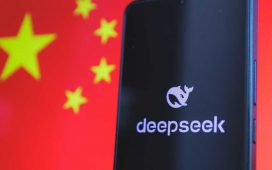
At this year’s Splunk .conf24, the company has to stake its claim as the choice for data observability and analytics and make the case that its acquisition by Cisco has only strengthened its capabilities.
On a practical level, there’s never been a better time to be in the business of big data and data analytics. Enterprises are generating more data than ever before, with increased activity at the edge and rapid adoption of AI models.
Splunk is in a prime position to monetize this, as a company with the singular focus of leveraging enterprise data.
Cisco’s acquisition of Splunk, a $28 billion all-cash deal, is inherently wrapped up in the platform’s ability to turn data into valuable insights. At Cisco Live 2024, in full swing this week, Cisco CEO Chuck Robbins has likened AI adoption to the cloud transition “on steroids” and stated that Splunk will be a crucial part of Cisco making the most of this shift.
Gary Steele, president of Go-to-Market at Cisco and GM at Splunk, affirmed this with the claim that Splunk can help firms struggling with their data to realize its true value and get their infrastructure in order to improve their position in the long term.
There’s strong competition in this space, with Dell Technologies having centered the idea of bringing AI to the edge and helping customers with AI go-to-market via its AI factories approach.
Now part of Cisco’s wider proposition, Splunk will have to double down on its specialties rather than attempt to diversify its product offerings to stand out. In practical terms, this should materialize through internal AI improvements aimed at lowering the barrier to entry for data and security insights.
Targeted AI improvements
At Splunk conf 23, the firm announced the Splunk AI Assistant, its solution for observability, with the capability to turn user prompts into Splunk Processing Language (SPL) queries using natural language processing (NLP).
Compared to the generative AI tools and chatbots customers may have used, the Splunk AI Assistant is relatively basic – it converts plain English inputs into usable SPL code, or answers Splunk-specific questions.
The basic improvements we’d expect to see at this year’s event would be support for more input languages and a wider context window to allow more detailed inputs by customers. But Splunk may also choose to greatly expand the scope of the AI Assistant, following the example of Microsoft Copilot or Google Vertex AI Agents.
Rather than simply turning plaintext prompts into SPL, an improved assistant could automatically turn user inputs into data insights via Splunk, cutting out the manual entry of SPL altogether. This combined approach would allow Splunk customers to obtain more domain-specific information or for the AI Assistant to suggest common queries to users.
One would also expect to see the AI Assistant expanded to cover Splunk’s security offerings, including its security metrics, analytics, and response recommendations.
New connections have already been announced between Cisco Security Cloud and Splunk at Cisco Live 2024 in Las Vegas, to further validate Splunk’s position as Cisco’s prize product for data analytics. Cisco claims AI is already changing security and this necessitates a greater use of the technology for defense, putting the ball in Splunk’s court to meet this need.
It’s likely that Splunk will give further context for connections of this type at .conf24, the opportune moment for the firm to explain how integration with Cisco’s expansive security portfolio will further empower Splunk customers.
But Splunk is also almost guaranteed to make some serious security announcements of its own. With last year’s announcement of Mission Control, Splunk’s security operations center offering, the company laid the groundwork for a more unified approach to threat detection.
Combined with Splunk’s existing security orchestration, automation, and response (SOAR), Mission Control would be the prime platform for a more involved AI Assistant. Away from AI, improvements for edge security within Mission Control – promised at .conf24 – are a sure bet for this year’s keynote.
But like a surfer who’s waited for hours to catch a wave at just the right time, Splunk could easily fumble the landing and miss its chance to harness the hype around AI.
On paper, Splunk is holding all the cards in the market right now. With interest in data mining and big data analysis at levels never before seen, it can use .conf24 to live up to its reputation on big data and prove its worth as part of Cisco’s long-term AI plans.












